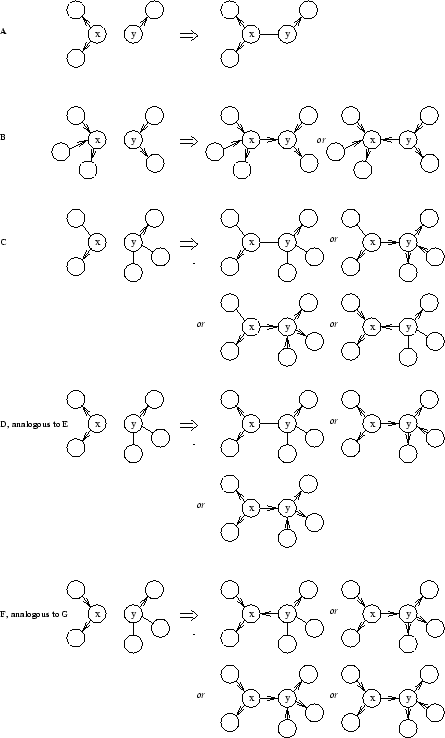The other basic operator, the removal of an edge (either link or arc) is much simpler than the addition of an edge, since only one neighboring configuration is obtained when we delete an edge. Moreover, it is not necessary to perform any test for detecting directed or undirected cycles. However, in this case we need to preserve condition 4 in the definition of RPDAG (if
![]() exists in
exists in
![]() or
or
![]() ), that could be violated after an arc is deleted. This situation may appear only when we are going to remove an arc
), that could be violated after an arc is deleted. This situation may appear only when we are going to remove an arc
![]() and either
and either ![]() or
or
![]() : in the first case, all the children of
: in the first case, all the children of ![]() that do not have other parents than
that do not have other parents than ![]() must be converted into neighbors of
must be converted into neighbors of ![]() , and this process is repeated starting from each of these children; in the second case, if
, and this process is repeated starting from each of these children; in the second case, if
![]() then in addition to the previous process, the arc
then in addition to the previous process, the arc
![]() must be converted into the link
must be converted into the link ![]() . Figure 13 illustrates these situations. This procedure of transforming arcs into links is exactly the same as the one described in the proof of Proposition 2.
. Figure 13 illustrates these situations. This procedure of transforming arcs into links is exactly the same as the one described in the proof of Proposition 2.
 |